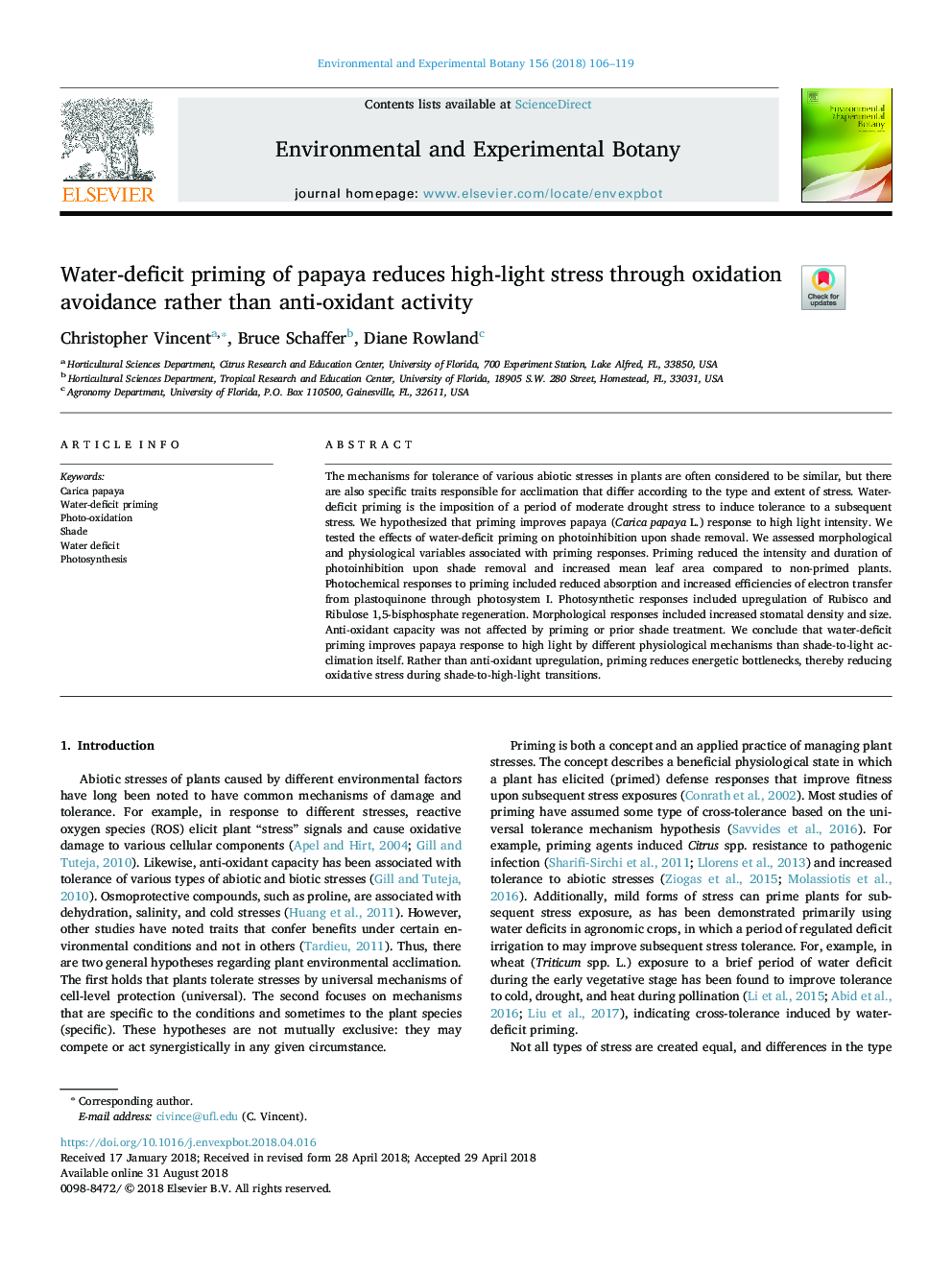| کد مقاله | کد نشریه | سال انتشار | مقاله انگلیسی | نسخه تمام متن |
|---|---|---|---|---|
| 10144876 | 1646317 | 2018 | 14 صفحه PDF | دانلود رایگان |
عنوان انگلیسی مقاله ISI
Water-deficit priming of papaya reduces high-light stress through oxidation avoidance rather than anti-oxidant activity
ترجمه فارسی عنوان
پرایمر آب کمپوست پاپایا باعث کاهش استرس نور با شدت نور از طریق اجتناب از اکسیداسیون و فعالیت ضد اکسید کننده می شود
دانلود مقاله + سفارش ترجمه
دانلود مقاله ISI انگلیسی
رایگان برای ایرانیان
کلمات کلیدی
کاریکا پاپایا، ضد آب کمپوست، عکس اکسیداسیون، سایه، کمبود آب، فتوسنتز،
موضوعات مرتبط
علوم زیستی و بیوفناوری
علوم کشاورزی و بیولوژیک
بوم شناسی، تکامل، رفتار و سامانه شناسی
چکیده انگلیسی
The mechanisms for tolerance of various abiotic stresses in plants are often considered to be similar, but there are also specific traits responsible for acclimation that differ according to the type and extent of stress. Water-deficit priming is the imposition of a period of moderate drought stress to induce tolerance to a subsequent stress. We hypothesized that priming improves papaya (Carica papaya L.) response to high light intensity. We tested the effects of water-deficit priming on photoinhibition upon shade removal. We assessed morphological and physiological variables associated with priming responses. Priming reduced the intensity and duration of photoinhibition upon shade removal and increased mean leaf area compared to non-primed plants. Photochemical responses to priming included reduced absorption and increased efficiencies of electron transfer from plastoquinone through photosystem I. Photosynthetic responses included upregulation of Rubisco and Ribulose 1,5-bisphosphate regeneration. Morphological responses included increased stomatal density and size. Anti-oxidant capacity was not affected by priming or prior shade treatment. We conclude that water-deficit priming improves papaya response to high light by different physiological mechanisms than shade-to-light acclimation itself. Rather than anti-oxidant upregulation, priming reduces energetic bottlenecks, thereby reducing oxidative stress during shade-to-high-light transitions.
ناشر
Database: Elsevier - ScienceDirect (ساینس دایرکت)
Journal: Environmental and Experimental Botany - Volume 156, December 2018, Pages 106-119
Journal: Environmental and Experimental Botany - Volume 156, December 2018, Pages 106-119
نویسندگان
Christopher Vincent, Bruce Schaffer, Diane Rowland,
